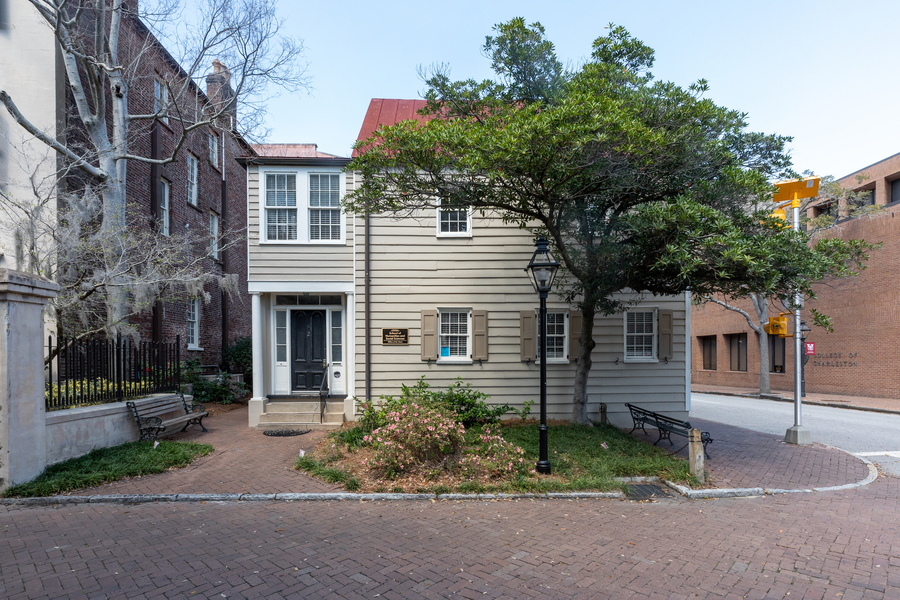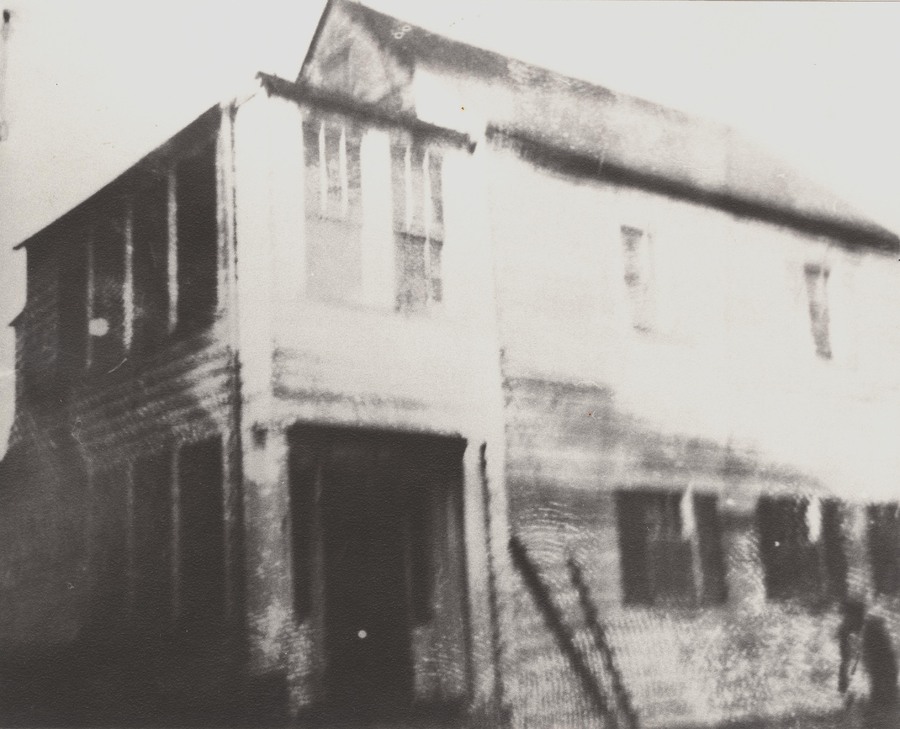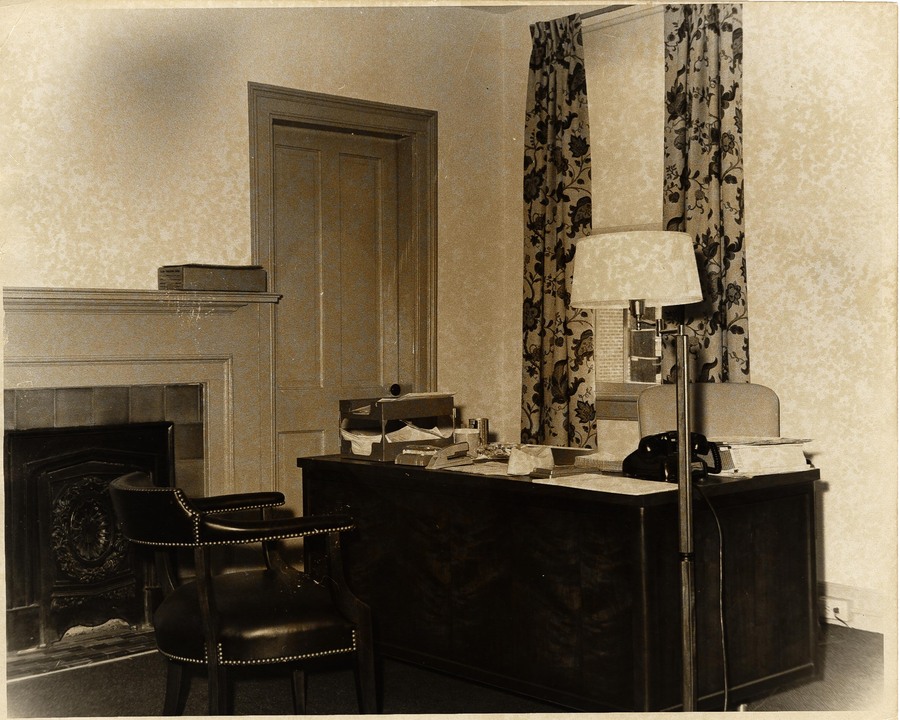Martindale-Bell House, 2 Green Way

The former home that now stands on the College of Charleston campus at 2 Green Way, beside St. Philip Street, is known as the Martindale-Bell House or the Johnson House.
The former home that now stands on the College of Charleston campus at 2 Green Way, beside St. Philip Street, is known as the Martindale-Bell House or the Johnson House. This former residence is significant within the realm of African American history in Charleston because, prior to the Civil War, this house was bought and lived in by a free Black woman who owned enslaved people.
In the early decades of the College of Charleston, the school owned land known as the “Free School Lands,” but by 1797, the College owed over $14,000 to the family of the College’s first president, Bishop Robert Smith. By 1817, the college tried to raise funds in other ways to no avail and had to sell off some of the lots from the Free School Lands. On July 1, 1817, James C. Martindale bought Lot 25 for $500 and used it as rental property. It was eventually sold to John Cessford Ker in 1836 for $3,020. It was mortgaged to Charles Graves for $5,250 in 1839, and went into foreclosure in 1841. The house went up for public auction, and Sally Johnson bought it on March 7, 1844 for $1,600.
Not much is known about Sally Johnson’s life. Most of what we know is from census records where she is sometimes referred to as Sarah or with the last name Johnston. The few documents that we have show her as a free person of color. She was reported to have been a “pastry cook” prior to buying the house. However, by 1860, Johnson acquired property that was worth $5,500 along with four enslaved people. Some of her real estate holdings included properties on Line Street in proximity to Coming Street.
This may appear contradictory to people today, but the institution of American slavery and slave ownership was very complex. In the late eighteenth century, the number of free Blacks owning slaves was very few with only thirty-six Black slave owners in Charleston in 1790. Some of these slave owners are noted for buying slaves who were their family members in order to set them free. Records also show that some slaves were bought randomly to be set free in a show of humanitarian pursuits. After 1820, some free Blacks in South Carolina began to find economic success, and more could afford to buy slaves. Because of this, many of these owners bought them for the traditional use of enslaved labor. The majority of these Black slave owners within South Carolina lived in Charleston. Between 1820 and 1840 about 72 to 77 percent of free Black households owned slaves. This new-found economic prosperity of free Blacks was fueled by their careers as bricklayers, pastry cooks, tailors, shoemakers, carpenters, seamstresses, and other professions. Within this group, female free Blacks were more likely to own slaves because of their higher rates of getting emancipation, inheritance from husbands, deceased loved ones, or being in jobs such as laundresses or pastry cooks that required help from others.
The figure of Sally Johnson remains important because she was able to find a level of success as a free woman of color in antebellum Charleston; however, she was also a slaveowner. Her persona represents the tensions between free people of color and enslaved people during the antebellum period. The owning of enslaved people by free Blacks built a barrier between the two groups. This led to many enslaved people distrusting the free Black community and often hindered any kind of solidarity the two groups could have found in one another. Despite the similarities in mistreatment of all Blacks in the antebellum South, free or enslaved, the example of Sally Johnson shows how the free Black and enslaved communities were not always equitable to each other and often, instead, were strained against one another.
When Sally Johnson died, she left the house to her descendants. Her family continued to live in the house until 1971 when it was sold to the College of Charleston. The house was restored in the 1970s, and during this process records from a society of free people of color, the Brown Fellowship Society, were found inside. The College of Charleston has used the property as offices for faculty over the years; it now is home to the School of Humanities and Social Sciences.
Images


